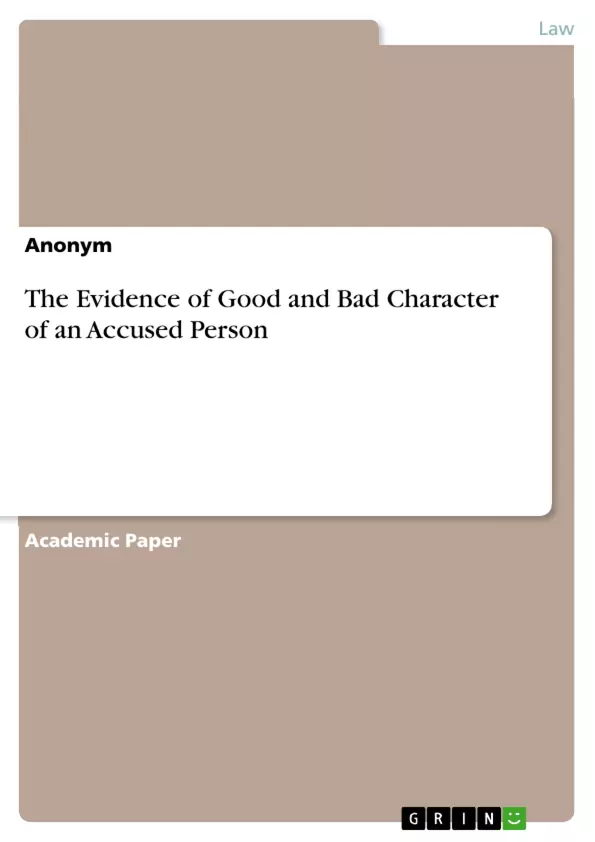This paper sets out to analyze the application of good and bad character evidence to criminal proceedings within the corpus of the Evidence Act, 2011.
The term "character" has been defined by several legal writers and Judges for the purpose of determining its scope in the light of the law of evidence. The general consensus from the several definitions is that “character” is the general reputation as opposed to his disposition. Under the Nigerian Evidence Act 2011, the same definition was given pursuant to section 77 which defines the expression “character” to mean reputation as distinguished from disposition. It goes on to state that except as mentioned in sections 78 to 82, evidence may be given only of the general reputation, and not of the particular acts by which reputation or disposition is shown.
Unlike in civil proceedings, the Evidence Act creates a distinction between bad and good character for the purpose of determining the admissibility of character evidence in criminal proceedings.
Table of Contents
- The Relevance and Admissibility of the Evidence of Good and Bad Character of an Accused Person in a Criminal Proceeding Under the Evidence Act, 2011*
- Character Evidence: Procedural and Substantive Purposes
- Evidence of Good Character
- Evidence of Bad Character
- Exceptions to the Inadmissibility of Bad Character Evidence
- Conclusion
Objectives and Key Themes
This article examines the admissibility of evidence concerning the good and bad character of an accused person in criminal proceedings under the Evidence Act, 2011. The article explores the procedural and substantive purposes of character evidence and the distinction between good and bad character in the context of criminal trials.
- The relevance and admissibility of character evidence in criminal proceedings
- The distinction between good and bad character evidence
- Exceptions to the general rule against admitting bad character evidence
- The procedural and substantive purposes of character evidence
- The impact of character evidence on the credibility of witnesses and defendants
Chapter Summaries
- The article begins by defining the term "character" as it relates to legal evidence, emphasizing the distinction between reputation and disposition. It then explores the dual purpose of character evidence, both for impeaching the credibility of a witness and for substantiating facts in issue.
- The article then focuses on the admissibility of good character evidence in criminal proceedings. It highlights that while good character is not a defense against a criminal charge, it can influence the court's assessment of a defendant's credibility and testimony.
- The article further discusses the general inadmissibility of bad character evidence in criminal proceedings, citing the rationale of avoiding prejudice against the accused. It then explores specific exceptions to this rule, including cases where bad character is a fact in issue or when the defendant presents evidence of their good character.
- The article continues by examining exceptions related to the defendant's questions to prosecution witnesses and the nature of the defense involving imputations on the prosecution or its witnesses. It emphasizes that mere denial of an allegation does not constitute an imputation on the prosecution.
- The article concludes by outlining the key principles governing the admissibility of character evidence in criminal proceedings. It underscores the importance of adhering to the relevant provisions of the Evidence Act, 2011, and the established legal precedents in determining the admissibility of character evidence.
Keywords
The main keywords and focus topics of this article are: character evidence, criminal proceedings, Evidence Act, 2011, good character, bad character, admissibility, credibility, reputation, disposition, exceptions, impeachment, substantive evidence, procedural evidence, prosecution, defense, witness, defendant, legal precedent.
- Quote paper
- Anonym (Author), 2021, The Evidence of Good and Bad Character of an Accused Person, Munich, GRIN Verlag, https://www.hausarbeiten.de/document/1144779


